Diving into the world of homemade pizzas, I quickly realized that choosing the right mozzarella is as crucial as mastering the perfect dough.
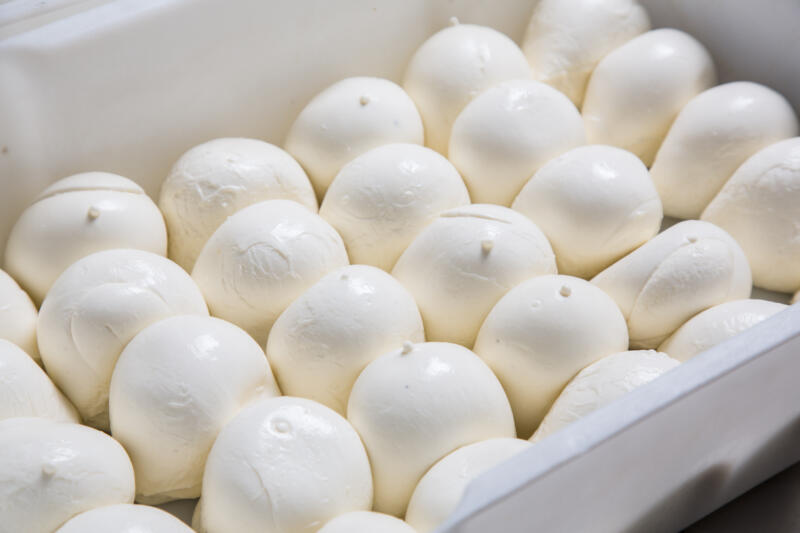
Mozzarella isn’t just cheese; it’s the soul of the pizza, melting beautifully to create that iconic cheesy stretch we all love.
Through my pizza-making journey, I’ve learned that not all mozzarella is created equal. From the fresh, creamy varieties that ooze with flavor to the firmer, low-moisture options that brown beautifully under the broiler, each type of mozzarella brings something special to the table.
Let’s explore what makes mozzarella the heart of the pizza and how to choose the best one for your next homemade masterpiece.
Highlights
- Fresh vs. Low-Moisture: I discovered that fresh mozzarella offers a delicate, creamy texture perfect for a classic Margherita, while low-moisture mozzarella is ideal for a golden, bubbly top on a more loaded pizza.
- Handling Moisture is Key: Managing the moisture content of fresh mozzarella is crucial to avoid a soggy crust. Draining or even lightly baking the cheese before topping the pizza can make all the difference.
- Experiment with Blends: Mixing different types of mozzarella, or even incorporating other cheeses like provolone or Parmesan, can elevate the flavor profile and texture of your pizza.
In this article:
Types of Mozzarella Cheese
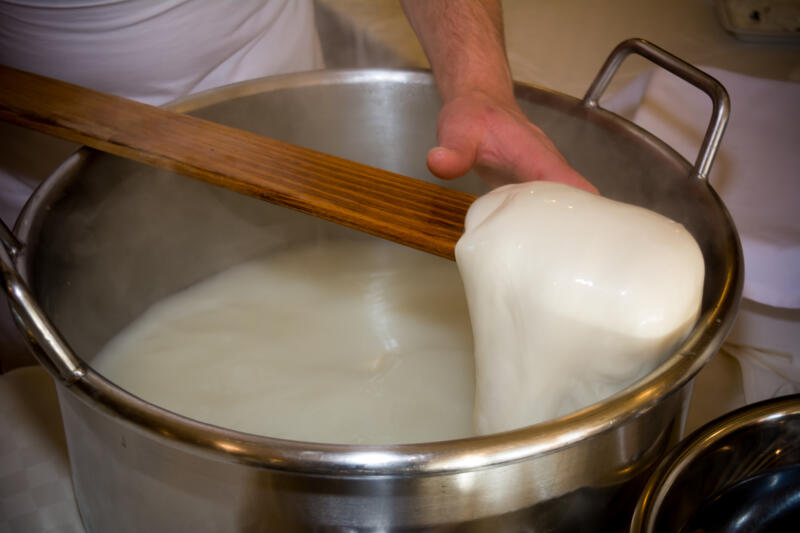
Mozzarella, a cheese that originated in Italy, has a rich history that dates back to the 7th Century.
To be designated as “Mozzarella,” the cheese must adhere to specific conditions outlined in its Protected Designation of Origin (PDO) status, which it received from the European Union.
Per these regulations, traditional Mozzarella cheese, particularly the renowned Mozzarella di Bufala Campana, mandates the exclusive use of milk from the domestic water buffalo.
Meanwhile, alternative iterations of mozzarella may utilize cow’s milk, which can selectively be whole or part-skim.
Navigating through the world of Mozzarella cheese introduces us to two primary categories: fresh and low-moisture. Let’s explore the defining characteristics of these pivotal mozzarella types:
1. Fresh
Often referred to as Fior di latte, this type is made from cow’s milk and has a high moisture content. It’s soft, creamy, and has a delicate flavor.
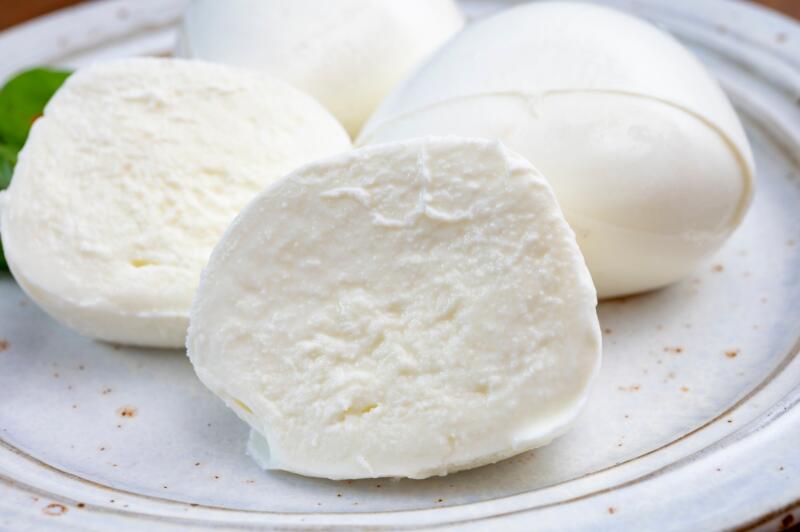
Mozzarella di bufala, on the other hand, is a type of fresh mozzarella made from buffalo milk. It tends to be creamier and more delicate, with a distinct, slightly tangy flavor and higher moisture than Fior di latte.
2. Low-Moisture
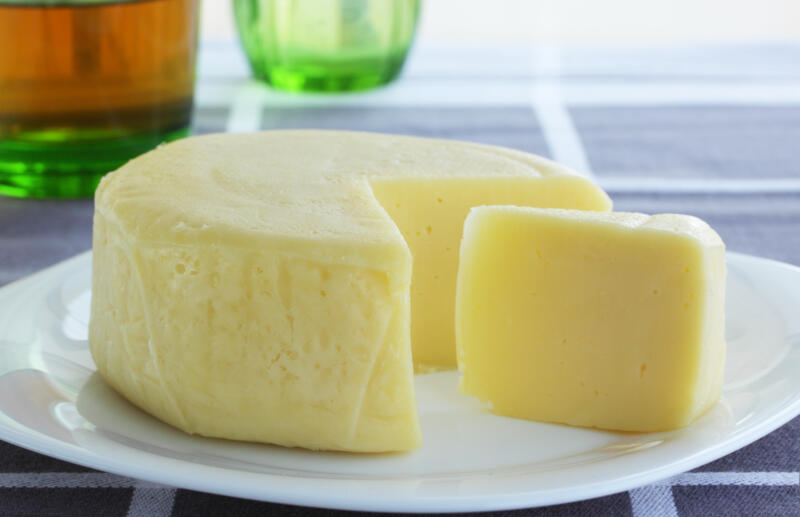
This type is aged longer, often for several weeks and sometimes up to a month or more, depending on the desired texture and flavor.
A longer aging process allows it to develop a firmer texture and a tangier, more savory flavor compared to its fresh counterpart.
It has a lower water content and melts easily, making it a popular choice for pizza. Moreover, thanks to its reduced moisture content, it boasts a longer shelf life and a more pronounced salty flavor.
3. Part-Skim
Part-skim mozzarella offers a slightly lighter option for cheese enthusiasts who might be watching their fat intake. It features reduced butterfat content that melts seamlessly on pizza.
It’s a bit firmer and has a milder flavor compared to whole milk mozzarella with a creamier texture and richer flavor.
4. Lactose-Free
Lactose-free mozzarella allows individuals with lactose intolerance to savor the creamy, melt-worthy joy of this beloved cheese without the digestive discomfort that typically follows.
Crafted to mimic the texture and flavor of regular mozzarella, lactose-free versions are produced by adding lactase, an enzyme that breaks down lactose into more digestible sugars, ensuring it’s safe for those sensitive to lactose.
Role of Mozzarella in Pizza
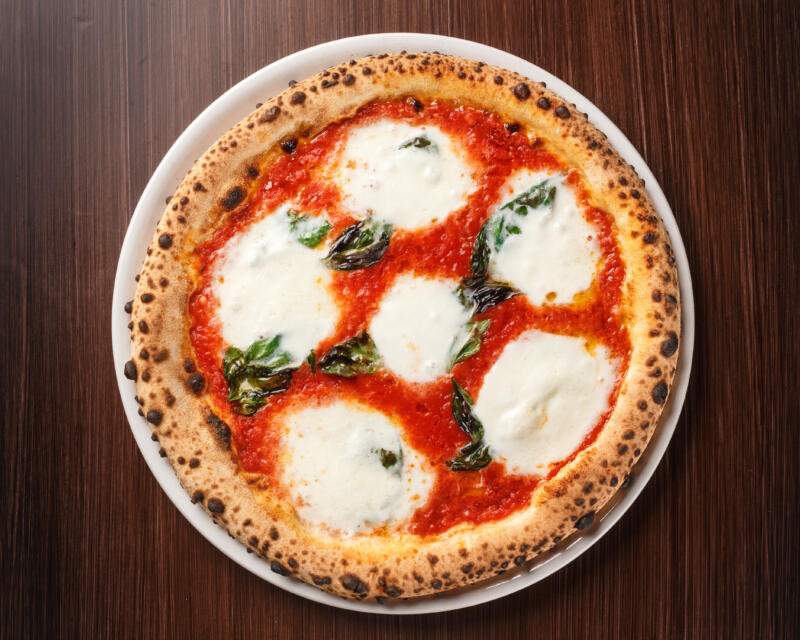
The role of mozzarella in pizza cannot be overstated. Its mild, milky flavor complements the robustness of the tomato sauce, while its melting quality creates the gooey, stretchy cheese pull that pizza lovers crave.
The fat content in mozzarella also plays a significant role in its taste and texture.
Higher fat content results in a creamier texture and richer flavor, while lower fat content yields a firmer texture and milder flavor.
Fresh vs Low-Moisture Mozzarella
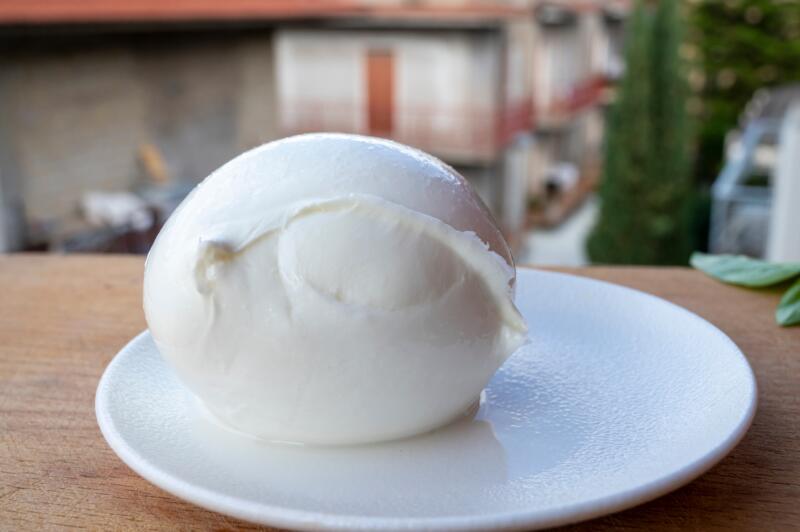
When it comes to pizza, the choice between fresh and low-moisture mozzarella can significantly impact the final product.
Fresh mozzarella, with its high water content, delivers a creamy, delicate flavor and a soft texture. However, it tends to release water as it melts, which can result in a soggy pizza if not handled correctly.
Low-moisture mozzarella, on the other hand, offers a stronger flavor and a firmer texture. It melts beautifully, creating that desirable, stretchy cheese pull without releasing as much water.
This makes it a safer choice for those who are new to pizza making or prefer a less watery pizza.
Experts often recommend low-moisture mozzarella for its ease of use and consistent results.
However, fresh one can bring a touch of gourmet to your pizza, provided you take steps to manage its moisture content.
Specific Use Cases for Each Type
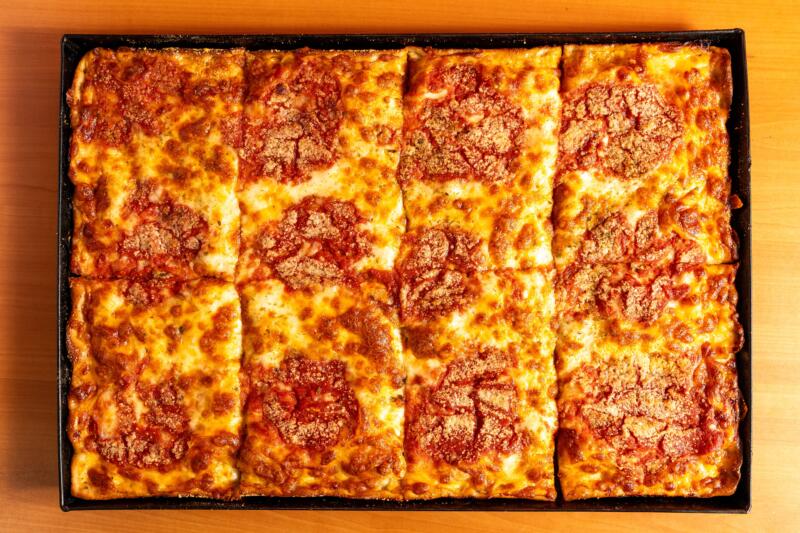
The type of mozzarella you choose can also depend on the type of crust you’re working with.
Thicker crusts can absorb some of the moisture released by fresh mozzarella, allowing you to enjoy its creamy texture and delicate flavor without ending up with a soggy pizza.
It shines in where its unique characteristics can be appreciated, such as a classic Margherita pizza.
On the other hand, thinner crusts don’t have the same capacity to absorb moisture. In this case, low-moisture mozzarella is often the better choice.
It offers a stronger flavor and a firmer texture, and it melts beautifully, creating that desirable, stretchy cheese pull without releasing as much water.
Low-moisture mozzarella is the workhorse of the pizza world. It’s suitable for most types of pizza, from a loaded meat lover’s to a simple cheese pizza.
Preparing Mozzarella

When using mozzarella in pizza, managing its moisture content is crucial to avoid a soggy crust.
There are several methods to pre-cook or prepare mozzarella to lose liquid, such as baking at a low temperature with a perforated baking tray or cooking the mozzarella on the pan for a couple of minutes.
How to Reduce Moisture in Fresh Mozzarella
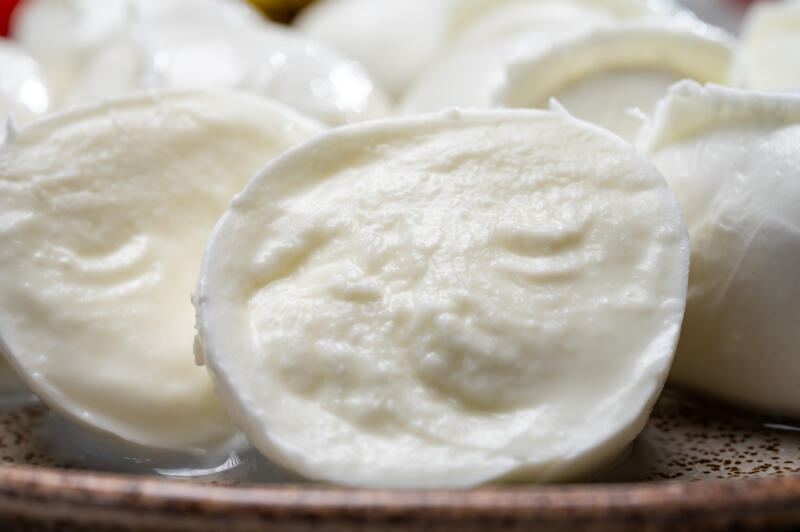
Excess moisture can be a problem when using mozzarella in pizza, especially fresh mozzarella.
It can release water as it melts, leading to a soggy pizza. This issue can be exacerbated when combined with other water-rich ingredients like mushrooms.
Low-moisture mozzarella, as the name suggests, has a lower water content and is less likely to make your pizza soggy.
1. Baking Method
Baking mozzarella at a low temperature with a perforated baking tray allows moisture to escape. This method involves baking the cheese at around 200°F (90°C) for about 15 minutes.
It can help reduce the water content of fresh mozzarella, resulting in a firmer texture and a slightly intensified flavor.
2. Pan Cooking Method
Cooking mozzarella on a pan for a couple of minutes can also help reduce moisture. It’s important to use a non-stick pan and keep the heat low to avoid burning the cheese.
This method can enhance the flavor of the mozzarella, giving it a slightly caramelized taste.
3. Other Ways
To make mozzarella less watery, let it drain in a colander, pat it with a paper towel, or give the cheese ball a gentle squeeze. This helps get a firmer, drier cheese for your pizzas.
These methods can be effective, but they may not remove as much water as baking or pan cooking.
It’s also important to note that these methods can slightly alter the texture of the cheese, making it a bit drier.
How to Use Mozzarella for Pizza
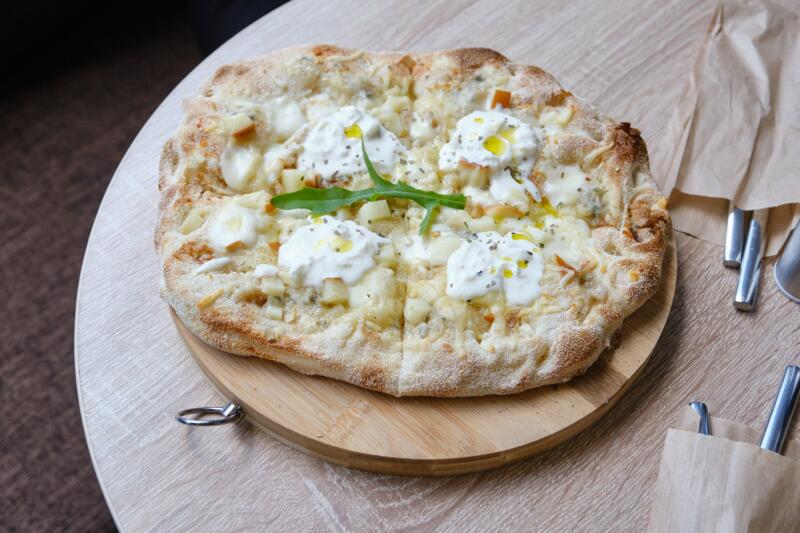
Proper storage and handling of mozzarella are crucial to maintain its quality. Keep it refrigerated and use it within a few days of opening for the best flavor and texture.
When preparing mozzarella for pizza, you can either slice it or shred it, depending on your preference.
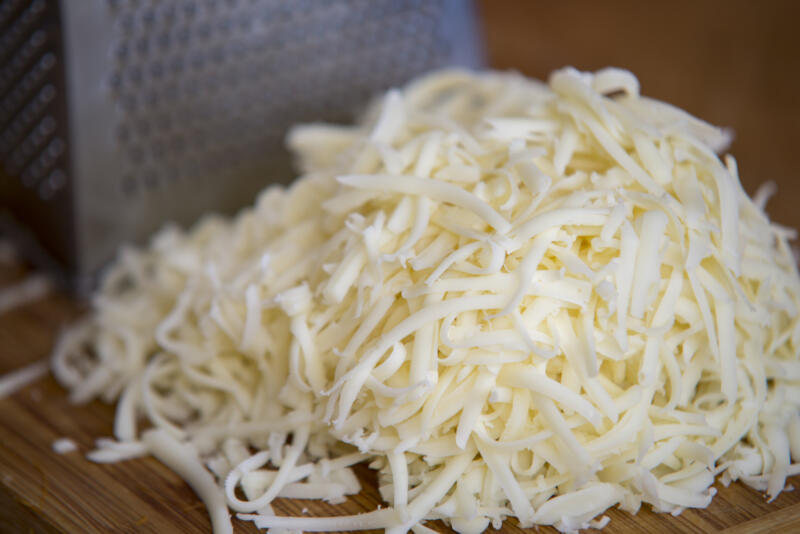
The ideal thickness for slices or shreds is about 1/4 inch or 6 mm. This allows the cheese to melt evenly without becoming too runny or burning.

Achieving the perfect melt involves a delicate balance of heat and time.
Generally, pizzas with mozzarella are baked at a high temperature (around 500°F or 260°C) for a short time (about 10-15 minutes). This allows the cheese to melt and brown slightly without overcooking the crust or other toppings.
When layering cheese on pizza, less is often more. A thin, even layer of cheese allows the other flavors to shine through and prevents the pizza from becoming too heavy or greasy.
Impact of Different Baking Methods
Different baking methods can affect the way mozzarella melts and browns.
Regular ovens, which heat from the bottom, can cause the cheese to melt quickly and bubble up.
Pizza ovens, which provide more intense, even heat, can give the cheese a slightly smoky flavor and a beautiful golden-brown color.
The Best Mozzarella for Pizza
Choosing the best mozzarella for pizza involves considering factors like meltability, flavor, and moisture content.
Some top mozzarella brands for pizza, including Grande, Galbani, Boar’s Head, Organic Valley, Polly-O, and Sargento, each come with their own pros and cons.
Ultimately, the best one for you will hinge on your personal taste, budget, and the specific type of pizza you’re crafting.
Geographical Influence on Mozzarella Choice
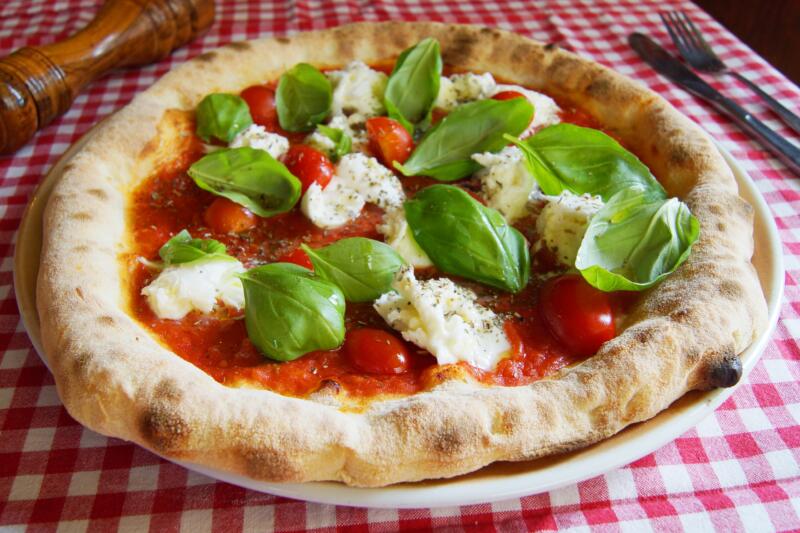
The preferred type of mozzarella can vary between different regions due to availability and tradition.
In Italy, Fior di latte and Mozzarella di bufala are commonly used, especially in traditional Neapolitan pizza and in the Campania region. These cheeses are fresh and have a high moisture content, giving the pizza a distinct, creamy texture.
In the US, low-moisture mozzarella is more commonly used. It’s readily available, easy to handle, and delivers a consistent result.
Its lower water content makes it a versatile choice that works well with a wide range of toppings and crust types.
Nutritional Aspects
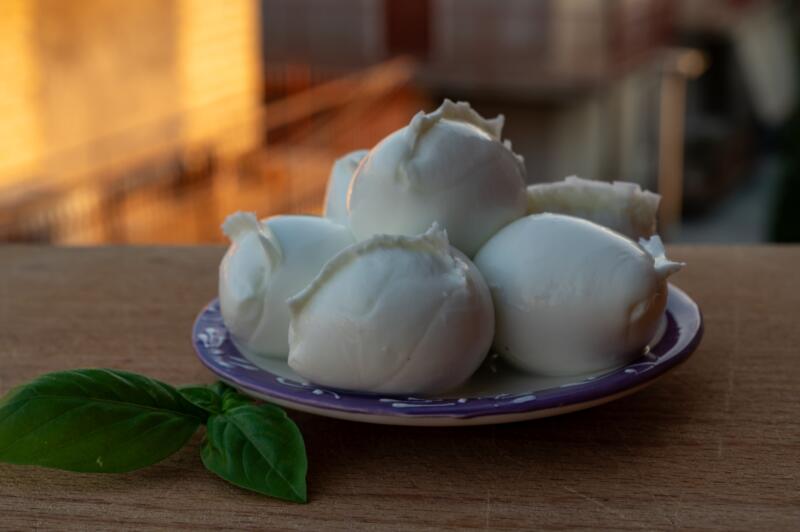
Macronutrients
Mozzarella is a nutrient-dense cheese that provides a good source of protein, fat, and a small amount of carbohydrates.
The protein in mozzarella contributes to muscle growth and repair, while the fat provides a source of energy and aids in the absorption of fat-soluble vitamins.
The carbohydrate content in mozzarella is minimal, making it a suitable choice for low-carb diets.
Calcium and Other Minerals
Mozzarella is rich in calcium, a mineral that is essential for bone health.
It also contains other minerals like phosphorus, which works with calcium to strengthen bones and teeth, and zinc, which supports immune function and wound healing.
Potential Drawbacks
Despite its nutritional benefits, mozzarella can be high in sodium and saturated fat. High sodium intake can contribute to high blood pressure, while saturated fat can raise cholesterol levels.
So, while mozzarella does contain sodium and saturated fat, enjoying it in moderation can certainly fit into a balanced diet.
Always refer to the nutritional information on the packaging for specific details about the cheese you are consuming.
Perfect Pizza Recipes
Creating the perfect pizza at home can be a rewarding experience, especially when you get to enjoy the fruits of your labor. Here are some ways to use mozzarella in your homemade pizzas:
Neapolitan Pizza
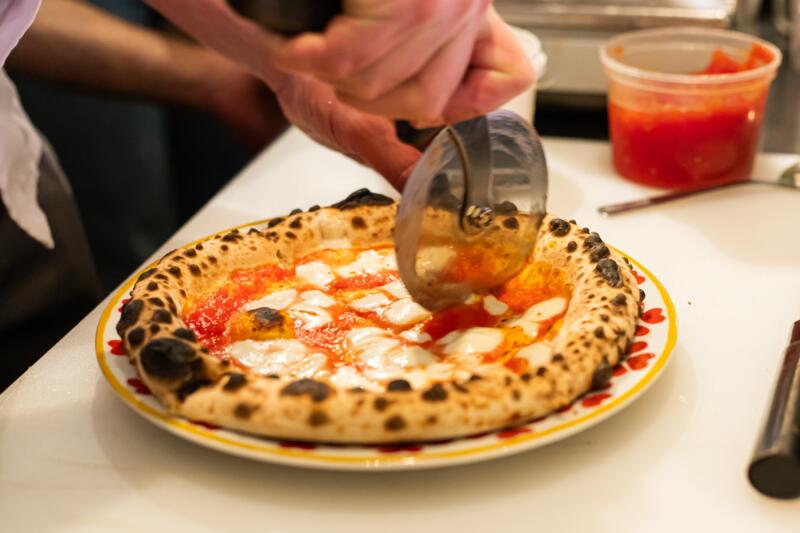
This traditional Italian pizza is simple yet flavorful. Start with a thin, crispy crust, add a layer of tomato sauce, and top it with slices of fresh mozzarella.
Bake it in a very hot oven or, better yet, a wood-fired oven if you have one, until the crust is golden and the cheese is bubbly and slightly browned.
Margherita Pizza
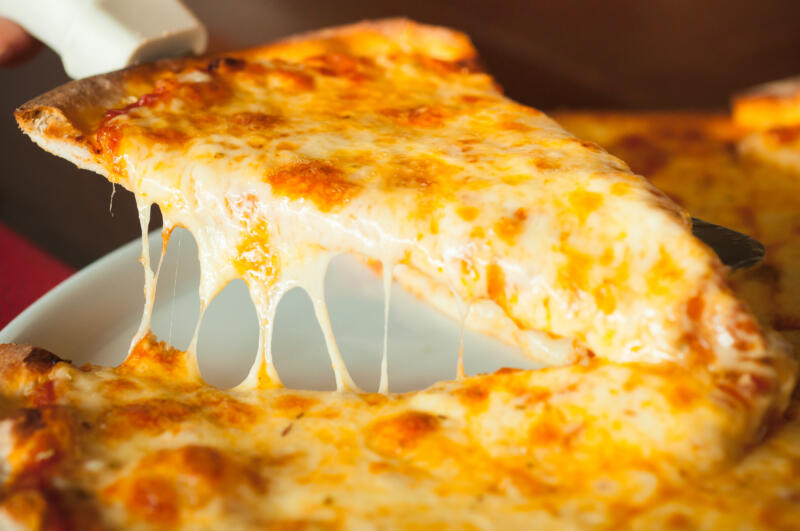
Named after Queen Margherita of Italy, this classic pizza showcases the colors of the Italian flag: red tomatoes, white mozzarella, and green basil.
Start with a layer of tomato sauce on your crust, add slices of mozzarella, and bake until the cheese is melted and the crust is crispy. Finish with a sprinkle of fresh basil leaves.
Pizza with Tomatoes, Basil, and Parmesan
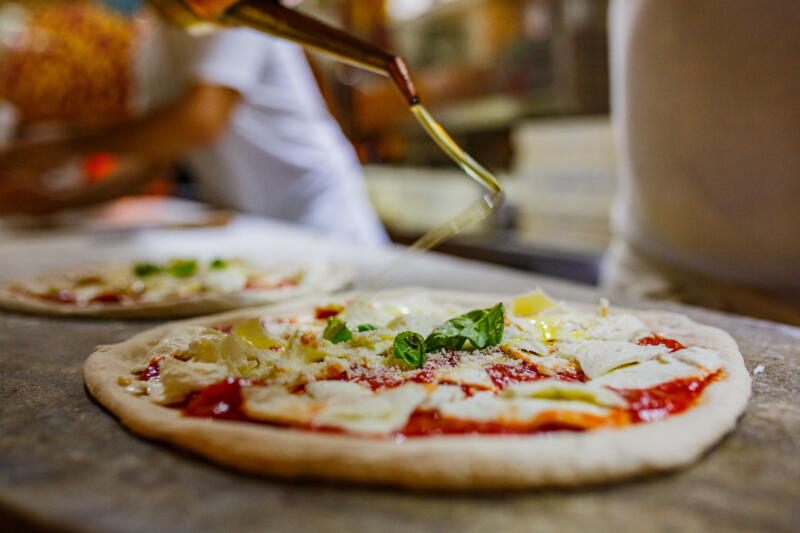
For a twist on the classic Margherita, try adding a sprinkle of parmesan cheese. The sharp, salty flavor of the parmesan perfectly complements the mild, creamy mozzarella.
Vegan Alternatives
Vegan cheeses are a plant-based alternative to traditional dairy cheeses. They are made from a variety of bases, including nuts, soy, and root vegetables, and are designed to mimic the flavor and texture of dairy cheeses.
Best Vegan Alternatives
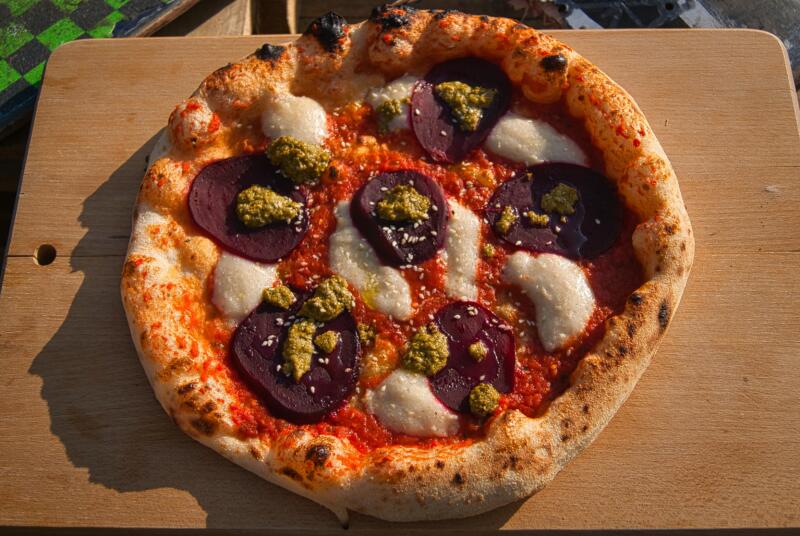
Several vegan cheese brands offer alternatives to mozzarella that work well on pizza.
Daiya, Follow Your Heart, and Violife are among the top brands. These cheeses are designed to melt and stretch like dairy cheese, and they come in a variety of flavors to suit different tastes.
Preparing Vegan Cheese for Pizza
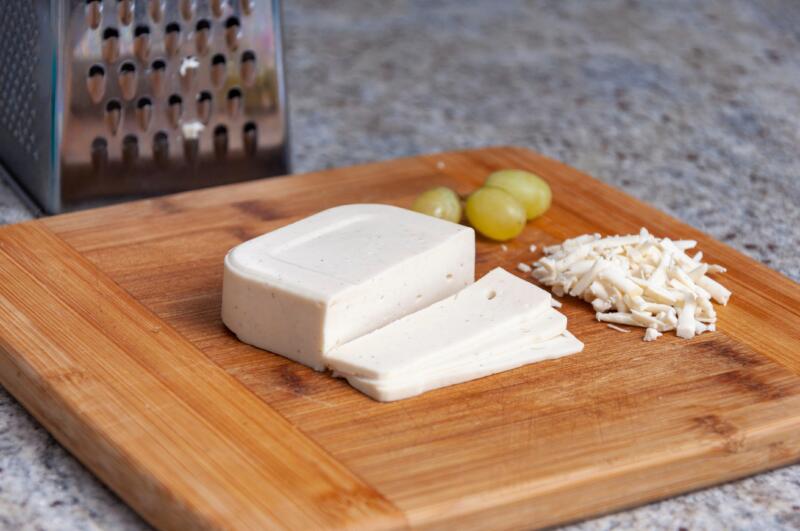
Using vegan cheese on pizza is similar to using traditional mozzarella, but there are a few differences to keep in mind.
Vegan cheeses often have a lower melting point than dairy cheeses, so they may need to be added partway through the baking process to prevent them from burning.
They also tend to have a lower moisture content, so they won’t make your pizza as soggy.
FAQs
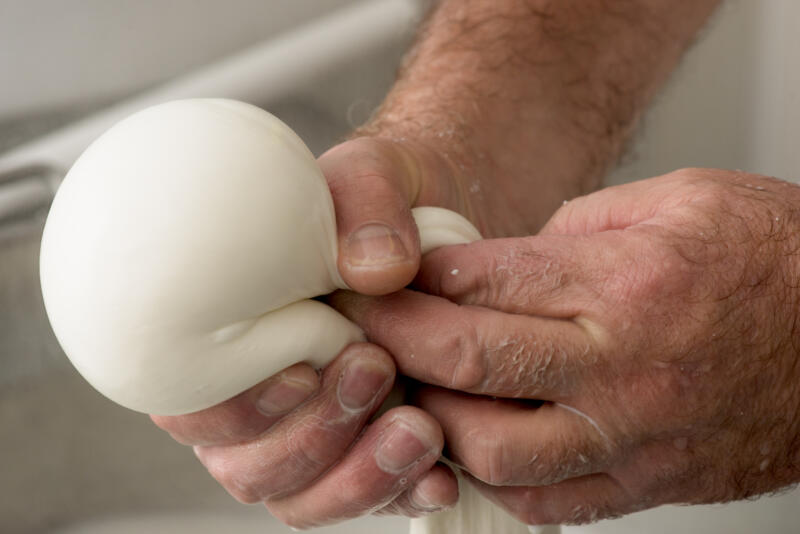
What type of mozzarella is best for pizza?
The best type of mozzarella for pizza depends on your personal preference and the type of pizza you’re making.
Low-moisture mozzarella is a popular choice for its ease of use and consistent results, while fresh mozzarella can add a gourmet touch to your pizza.
What is the difference between pizza mozzarella and regular mozzarella?
Pizza mozzarella is typically a type of low-moisture mozzarella that’s been specifically designed to perform well on pizza.
It has a lower water content than fresh mozzarella, which helps prevent the pizza from becoming soggy.
What’s the best mozzarella cheese for melting?
Low-moisture mozzarella is often considered the best for melting due to its lower water content and firmer texture.
What cheese is best for restaurant pizza?
Many pizzerias use a blend of cheeses, including mozzarella, provolone, and cheddar.
The exact blend depends on the restaurant’s preference and the style of pizza they’re making.
How do I store leftover mozzarella?
Leftover mozzarella should be stored in the refrigerator.
Fresh mozzarella should be kept in its brine or water and used within a few days, while low-moisture mozzarella can be wrapped tightly and stored for up to two weeks.
Can I freeze mozzarella for pizza?
Yes, mozzarella can be frozen for up to six months.
However, freezing can change the texture of the cheese, making it more crumbly and less creamy.
It’s best to shred or slice the cheese before freezing and use it directly from the freezer without thawing.
Closing Thoughts
Whether you’re a fan of the creamy, delicate flavor of fresh mozzarella or the firmer, melt-friendly low-moisture mozzarella, there’s no denying the magic this cheese brings to pizza.
So why not put this knowledge to the test? Try making your own pizza at home, experimenting with different types of mozzarella. See how they perform, taste the difference, and find your personal favorite.
And remember, the best mozzarella for pizza is the one that makes your taste buds dance and your pizza-loving heart sing.
Have any questions or comments? Feel free to share them.
We’d love to hear about your pizza-making adventures!